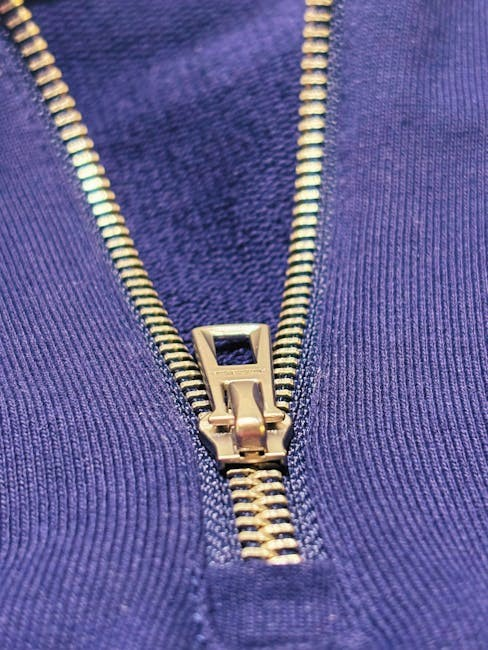Thread identification is crucial for ensuring compatibility and safety in mechanical systems. It involves determining thread type, pitch, and angle to select the correct fasteners and tools, preventing mechanical failures.
What is Thread Identification?
Thread identification is the process of determining the specific type, pitch, and angle of a thread on a bolt or screw. It involves measuring the thread’s dimensions and comparing them to standard specifications to ensure correct fastener selection and compatibility. This process is essential for maintaining safety and functionality in mechanical systems, as mismatched threads can lead to mechanical failures. Thread identification typically involves visual inspection, measurement with tools like thread gauges and calipers, and reference to thread charts to confirm the thread’s specifications. Accurate identification ensures proper fit and performance, preventing issues such as loosening or damage over time. It is particularly critical in industries like aerospace and automotive, where precision and reliability are paramount. By understanding thread characteristics, individuals can select the appropriate fasteners and tools, ensuring optimal results in their projects.
Why is Thread Identification Important?
Thread identification is crucial for ensuring mechanical compatibility, safety, and reliability. Proper identification prevents mismatches between fasteners and components, which can lead to mechanical failures, damage, or safety hazards. Accurate thread identification ensures that the correct fasteners are selected, maintaining system integrity and performance. In industries like aerospace, automotive, and construction, precise thread matching is essential for safety-critical applications. Misidentified threads can result in loose connections, leakage, or structural weaknesses, potentially causing accidents or costly repairs. Additionally, correct thread identification helps optimize assembly processes, reduce downtime, and extend the lifespan of equipment. By understanding and matching thread specifications, professionals can ensure seamless integration of components, enhance overall system performance, and minimize the risk of operational failures. This process is fundamental for maintaining quality, reliability, and efficiency in various engineering and manufacturing applications.

Types of Threads
Threads are categorized into metric, imperial, and specialty types, each with unique dimensions, pitches, and angles. Understanding these differences is essential for proper identification and application in various mechanical systems.
Metric Threads
Metric threads are standardized under ISO 261, featuring diameters and pitches measured in millimeters. Common sizes include M10, M12, and M16, with pitches like 1.0 or 1.5 mm. They are widely used in automotive, aerospace, and machinery industries due to their precise specifications. Metric threads are identified by their nominal diameter and pitch, such as M12x1.75, indicating a 12mm diameter and 1.75mm pitch; The thread angle is typically 60 degrees, with a rounded root radius for strength. Accurate measurement tools like thread gauges are essential for identification. Proper use of metric threads ensures compatibility and safety in mechanical systems. Understanding their specifications helps avoid errors during assembly or repair. Always verify thread type and dimensions before selecting fasteners to maintain integrity and functionality.
Imperial Threads
Imperial threads, part of the Unified Thread Standard (UTS), are measured in inches and are widely used in the United States and other countries. Common sizes include 1/4″, 1/2″, and 1″, with threads per inch (TPI) varying from 20 to 16 or 13. The thread angle is typically 60 degrees, similar to metric threads, but Imperial threads often have a slightly rounded crest and root. Coarse threads are more common for general use, while fine threads are used for precision applications. Imperial threads are identified by their nominal diameter and TPI, such as 1/2″-13, indicating a 1/2-inch diameter and 13 threads per inch. Proper identification ensures compatibility and functionality in mechanical systems. Accurate measurement tools like thread gauges are essential for verifying Imperial thread specifications, preventing errors in assembly or repair.
Specialty Threads
Specialty threads are designed for unique applications requiring specific mechanical properties. Examples include Buttress, ACME, and Whitworth threads. These threads have distinct profiles, angles, and pitches tailored for high torque, resistance to wear, or specific load-bearing capacities. Buttress threads, for instance, are ideal for high-strength applications in one direction, while ACME threads are used for heavy loads and linear motion. Whitworth threads, with their larger radius and 55-degree angle, offer exceptional durability and resistance to vibration. Identifying specialty threads requires understanding their unique characteristics and often involves specialized tools or manufacturer specifications. Misidentification can lead to mechanical failure or compromised performance. Proper identification ensures the right thread is selected for the application, optimizing safety and efficiency in critical systems. Specialty threads highlight the importance of precise measurement and expertise in thread identification processes.

Tools and Materials for Thread Identification
Essential tools include thread gauges, calipers, and identification charts. These tools help measure thread pitch, angle, and diameter, ensuring accurate identification and compatibility for safe and efficient mechanical operations.
Thread Gauges
Thread gauges are precision tools used to measure and verify thread dimensions. They come in various types, including ring and plug gauges, and are essential for ensuring thread accuracy. These gauges help determine if a thread is within specified tolerance limits, ensuring compatibility with mating parts. Proper use of thread gauges involves aligning the gauge with the thread and checking for smooth fitment; They are commonly used in quality control to maintain manufacturing standards. By ensuring threads meet specifications, gauges prevent assembly issues and mechanical failures. Regular calibration of thread gauges is necessary to maintain their accuracy. Understanding how to use and interpret thread gauges is a fundamental skill in thread identification and mechanical assembly processes.
Calipers
Calipers are versatile measuring tools used to determine thread dimensions accurately. They are essential for identifying thread pitch, major diameter, and thread depth. Digital, dial, and vernier calipers are commonly used, with digital calipers offering precise readings. To measure threads, place the calipers perpendicular to the thread axis, ensuring proper alignment. Measure across several threads to avoid inaccuracies. Calipers are particularly useful for identifying metric and imperial threads, as they provide clear measurements of pitch and diameter. Regular calibration is necessary to maintain accuracy. Proper use of calipers helps prevent errors in thread identification, ensuring compatibility between components. By combining caliper measurements with thread charts, you can confidently identify and match threads for various applications. This tool is indispensable in both DIY projects and professional settings, ensuring precise and reliable results. Always follow manufacturer guidelines for optimal performance and accuracy.
Thread Identification Charts
Thread identification charts are essential visual tools for recognizing and matching threads. These charts display detailed illustrations of various thread types, including metric, imperial, and specialty threads. They often include measurements such as pitch, major diameter, and thread angle, making it easier to compare and identify unknown threads. Charts typically feature images of thread profiles, which help users distinguish between similar thread types. To use a chart, start by visually inspecting the thread and measuring its pitch and diameter using tools like calipers. Then, compare these measurements with the chart to find a match. This method ensures accuracy and prevents errors in selecting the correct fastener. Thread identification charts are widely available online or in print, making them a valuable resource for both professionals and DIY enthusiasts. They are indispensable for ensuring compatibility and avoiding costly mistakes in mechanical projects.

Step-by-Step Guide to Thread Identification
A systematic approach to identifying threads involves visual inspection, measuring pitch and angle, comparing with charts, selecting the right fastener, and verifying the thread match for compatibility.
Visual Inspection of the Thread
Start by examining the thread for visible damage, wear, or contamination. Check for rust, corrosion, or debris that may interfere with identification. Note the thread’s general appearance, including its pitch, angle, and whether it is left-hand or right-hand. Observe the thread type—coarse, fine, or specialty—and compare it to known samples or charts. Look for any unique features, such as thread depth or chamfers. Use magnification if necessary for a clearer view. This step helps narrow down potential thread types and ensures accurate measurements later. Always handle threads gently to avoid further damage. A thorough visual inspection is crucial for reliable identification and ensures subsequent measurements are precise and meaningful.
Measuring the Thread Pitch
Measuring the thread pitch is essential for accurate identification. Thread pitch refers to the distance between corresponding points on adjacent threads. Use a thread pitch gauge to determine the pitch by aligning the gauge’s teeth with the thread. Gently rock the gauge back and forth until it fits snugly. The pitch value is indicated by the gauge’s scale. For metric threads, measure the distance between one thread to another using calipers, then divide by the number of threads spanned. For imperial threads, count the number of threads per inch (TPI) using a TPI gauge. Common pitch measurements range from coarse (e.g., 1/4″-20) to fine (e.g., 1/4″-28). Accurate pitch measurement ensures compatibility with mating parts and proper fastener selection.
Measuring the Thread Angle
Measuring the thread angle is crucial for ensuring proper thread compatibility and functionality. The thread angle is the angle formed between the sides of the thread. Common thread angles include 60 degrees for metric threads and 55 degrees for some imperial threads. To measure the thread angle, use a thread angle gauge or a precision protractor designed for this purpose. Place the tool against the thread and align it with the thread’s sides. Ensure the tool is properly seated to avoid inaccurate readings. The angle measurement is essential for identifying thread type and ensuring mating parts fit correctly. Proper measurement prevents issues like cross-threading or stripped threads. Always use calibrated tools for accurate results, as incorrect measurements can lead to compatibility problems. Understanding standard thread angles aids in selecting the right fasteners and ensuring reliable connections.
Comparing with Thread Charts
Comparing your measurements with thread charts is a critical step in thread identification. Thread charts provide detailed specifications for various thread types, including metric, imperial, and specialty threads. Once you have measured the thread pitch and angle, refer to a thread chart to match your findings. Locate the chart corresponding to the thread type you suspect (e.g., metric or imperial). Check the pitch and angle measurements against the chart to identify the specific thread profile. Pay attention to additional details such as the class of fit (e.g., 1A, 2A, 3A) and thread form (e.g., UN, ISO). Use a magnifying glass or digital tool to ensure accuracy. Thread charts are available in printed or digital formats, and they are essential for verifying compatibility. By cross-referencing your measurements, you can confidently identify the thread and select the correct fastener or mating component. This step ensures precision and avoids compatibility issues.
Selecting the Right Fastener

Selecting the right fastener involves matching the identified thread specifications to the appropriate bolt, nut, or screw. Once the thread type, pitch, and angle are confirmed, refer to the manufacturer’s specifications or a fastener catalog. Ensure the fastener material and finish are suitable for the application’s environmental and load requirements. Consider the class of fit (e.g., 1A, 2A, 3A) to ensure proper mating with the tapped hole or receiving thread. Use the thread chart to verify compatibility, and check for any additional features like coatings or threadlocking compounds. Always prioritize fasteners that meet industry standards (e.g., ISO, DIN, or ASME). If unsure, consult the manufacturer’s recommendations or seek guidance from a qualified professional. Proper fastener selection ensures safety, performance, and long-term reliability in the assembly or repair. This step is crucial for avoiding mismatches that could lead to failure or damage.
Verifying the Thread Match
Verifying the thread match ensures compatibility between the fastener and the receiving thread, crucial for preventing mechanical failure. After identifying the thread type, pitch, and angle, compare these measurements with the specifications of the fastener. Use thread gauges or calipers to measure the thread accurately, ensuring measurements align with the identified standard. Refer to thread identification charts to confirm the thread specifications correspond to the fastener’s requirements. Check the class of fit to ensure the threads mate properly, with acceptable tolerance levels. Physical mating of the fastener and receiving thread can also confirm compatibility. Always use calibrated tools and follow measurement guidelines to ensure accuracy. Proper verification ensures safety, performance, and reliability in the assembly, avoiding potential issues from mismatched threads. This step is essential for maintaining the integrity of mechanical systems and preventing premature wear or failure.

Understanding Thread Measurements
Thread measurements are critical for ensuring compatibility and functionality. They include pitch, angle, and class of fit, each defining specific thread characteristics for accurate identification and application.

Thread Pitch
Thread pitch is the distance between corresponding points on adjacent threads. It is measured parallel to the axis of the thread and expressed in millimeters or inches. A coarse pitch thread has fewer threads per inch, while a fine pitch thread has more, offering higher strength and resistance. Measuring pitch is essential for identifying thread type and ensuring compatibility with mating parts. Common metrics include 1.0, 1.5, and 2.0 mm for metric threads, and 1/4″, 1/2″ for imperial threads. Using thread gauges or calipers ensures accurate measurement. Proper pitch identification prevents assembly issues and ensures optimal performance. Always refer to thread charts for precise measurements and compatibility. Accurate pitch measurement is critical for selecting the right fastener, avoiding costly errors in manufacturing or repairs.
Thread Angle
Thread angle refers to the angular measurement between the sides of a thread. Common angles include 55°, 60°, and 75°, with 60° being the most widely used in ISO standards. The angle is critical for ensuring proper mating between male and female threads. A smaller angle provides tighter engagement, while a larger angle offers easier assembly. Measuring thread angle requires specialized tools like thread gauges or optical comparators. Incorrect angles can lead to poor fitment, reduced strength, or premature wear. Always verify the angle against specifications to ensure compatibility. Using thread charts or reference guides helps in accurate identification. Proper thread angle identification is essential for maintaining the integrity and functionality of threaded fasteners in various applications.
Class of Fit
Class of Fit determines the tolerance between male and female threads, ensuring proper mating and functionality. It is defined by standards like ISO or ANSI, specifying acceptable limits for thread dimensions. Common classes include 1A (loose fit), 2A (medium fit), and 3A (tight fit) for external threads, and 1B, 2B, and 3B for internal threads. The class of fit directly impacts the performance, longevity, and seal of the threaded connection. Proper selection ensures ease of assembly, resistance to stripping, and optimal load-bearing capacity. Misidentification can lead to poor fitment, leakage, or premature failure. Using thread gauges or measurement tools helps verify the class of fit, ensuring compliance with design specifications. Always refer to thread charts or manufacturers’ guidelines for accurate identification and selection of the appropriate class of fit for your application.

Common Mistakes and Best Practices
Common mistakes include rushing measurements and ignoring thread wear. Best practices involve using calibrated tools, referencing charts, and verifying fits to ensure accuracy and reliability in thread identification.
Common Mistakes to Avoid

When identifying threads, common mistakes include rushing measurements, using uncalibrated tools, and failing to account for thread wear. Neglecting to measure both major and minor diameters can lead to incorrect identification. Using thread charts without proper lighting or magnification often results in misinterpretation. Additionally, assuming all threads are standard (metric or imperial) can cause errors, as specialty threads require specific identification methods. Overlooking the importance of thread angle measurements is another frequent mistake, as it can lead to mismatched fasteners. Finally, not verifying the thread match with actual fasteners or nuts can result in incompatibilities. Avoiding these errors ensures accurate and reliable thread identification, preventing potential assembly issues or system failures.
- Rushing measurements
- Using uncalibrated tools
- Ignoring thread wear
- Assuming all threads are standard
- Not verifying thread matches
Best Practices for Accurate Identification
To ensure accurate thread identification, follow best practices such as using high-quality, calibrated tools like thread gauges and precision calipers. Always measure threads in a clean, well-lit environment to avoid contamination or misinterpretation; Systematically measure the major and minor diameters, pitch, and angle to gather comprehensive data. Record measurements meticulously to reduce errors. Compare results with thread charts or standards to confirm accuracy. Use magnification tools if necessary to inspect thread forms and angles. Clean the thread before measurement to remove dirt or debris that could skew results. Cross-verify findings with multiple tools or references to ensure consistency; Finally, consult technical resources or experts when uncertain. By adhering to these practices, you can achieve reliable and precise thread identification.
- Use calibrated tools
- Measure in a clean, well-lit environment
- Systematically measure all thread dimensions
- Record and cross-verify measurements
- Clean threads before measurement
- Consult resources or experts when unsure

Resources and References
Explore technical manuals, ISO/ANSI standards, and manufacturer websites for detailed guides. Utilize online calculators and thread charts for precise identification. Refer to engineering handbooks for comprehensive insights.
Additional Resources
For further learning, consult technical manuals, industry standards, and online resources. Websites like ANSI and ISO provide detailed specifications. Utilize thread identification apps and online calculators for precise measurements. Many manufacturers offer free resources, such as downloadable guides and charts. Engineering universities often publish comprehensive materials on thread standards. Online forums and communities, like engineering groups, share practical insights. Consider enrolling in technical courses or workshops for hands-on training. Video tutorials on platforms like YouTube can visually guide you through identification processes. Always cross-reference information from multiple sources to ensure accuracy. Leveraging these resources enhances your understanding and skills in thread identification, ensuring reliable and accurate results in your projects or professional tasks.
References and Further Reading
For a deeper understanding of thread identification, explore industry standards such as ANSI B1.1 for imperial threads and ISO 261 for metric threads. The Machinery’s Handbook and Standard Handbook of Fastening and Joining provide detailed insights. Online databases like Techstreet and IHS Markit offer access to updated standards. Academic papers on mechanical engineering topics can be found in journals like the Journal of Manufacturing Science and Engineering. ASME and ASTM publications are valuable for technical specifications. Additionally, manufacturer websites often provide technical documents and datasheets. For practical learning, consider textbooks like Thread Identification and Measurement or Fastener Handbook. These resources ensure a comprehensive understanding of thread identification principles and applications.